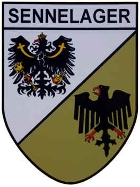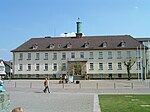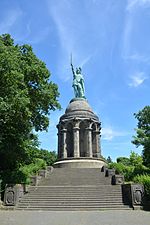Senne (Germany)

The Senne is a natural region in the Regierungsbezirk of Detmold, in the state of Nordrhein-Westfalen in west-central Germany. It lies to the west of the Teutoburger Forest, and has an area of approximately 210 km2. It lies between the cities of Bielefeld to the north-west, Detmold to the north-east, and Paderborn to the south. Heath, calcareous grassland, and moorland cover most of the area. The river Ems arises here. Flora and fauna are very rich in the Senne, 901 of the 5000 animal and plant species are listed on the IUCN Red List.116 km2 of the Senne and therefore more than the half of it area are taken by the Sennelager Training Area, which is mainly used by British forces. By 2020 all of the planned reductions in British forces had been completed, which now leaves the future of this landscape undecided.
Excerpt from the Wikipedia article Senne (Germany) (License: CC BY-SA 3.0, Authors, Images).Senne (Germany)
Mergelweg,
Geographical coordinates (GPS) Address Nearby Places Show on map
Geographical coordinates (GPS)
| Latitude | Longitude |
|---|---|
| N 51.85 ° | E 8.78 ° |
Address
Mergelweg
Mergelweg
33189
North Rhine-Westphalia, Germany
Open on Google Maps










